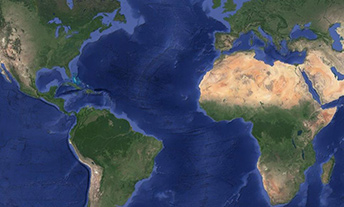
Cinzia Zuffada
Associate Chief Scientist - NASA's Jet Propulsion Laboratory (JPL)
Contents
- Education
- What first sparked your interest in space and science?
- How did you end up working in the space program?
- Tell us about your job. What do you do?
- What's one piece of advice you would give to others interested in a similar career?
- What has been your biggest challenge, professional or personal, and how did you overcome it?
- Who inspires you?
- What have been some of your favorite projects to work on?
- What are some fun facts about yourself?
- What is your favorite space image and why?
- Additional Links
- Where are they from?
Education
Liceo Scientifico Taramelli
Universita’ di Pavia
Electronic Engineering
What first sparked your interest in space and science?
I was interested in nature, and remember observing and experimenting at an early age. In school in Italy, I was always good at math and other technical subjects, although I did not see a path to space for a long time until I moved to the U.S.
How did you end up working in the space program?
I had learned about JPL [NASA’s Jet Propulsion Laboratory ] while I was a postdoc at Caltech, not yet working on space-related subjects. I was fascinated by the environment and all that was going on. The people I met were very enthusiastic, particularly as they transitioned from Caltech after getting their doctorates. It was definitely very attractive. I tried applying but was not successful the first time. I tried again a few years later when I was better prepared, after some years of experience working in the U.S.
Choose a doctoral problem that will help you develop skills applicable to other areas or disciplines, and surround yourself with excellent people as teachers and peers. – Cinzia Zuffada
Tell us about your job. What do you do?
I am the JPL Associate Chief Scientist, working closely with the Chief Scientist on setting directions for science, informing and managing the laboratory’s internal R&D [research and development] programs, and working for the well-being of the researchers at the lab. I am also active in Earth science research, specifically, I am a modeler working with reflected GPS signals used to study wetlands and their dynamics.
What's one piece of advice you would give to others interested in a similar career?
Build a good technical foundation, choose a doctoral problem that will help you develop skills applicable to other areas or disciplines, and surround yourself with excellent people as teachers and peers. Building a network is very important, so present your work at seminars and conferences, and publish. Leadership is a requirement, and it starts with good organization and proactivity. Being a listener is a very important interpersonal skill.
What has been your biggest challenge, professional or personal, and how did you overcome it?
Coming from Italy to the US was very difficult, both professionally and personally, requiring a lot of adjustments. Together with the challenge of the move, there was a desire to broaden my horizons and I persevered in the face of adversity. But I must say that challenges persist.
Who inspires you?
Several colleagues are a great inspiration to me, beginning with the people who hired me at JPL and who were working at the leading edge of high-performance computing in the late 80s and early 90s. In that environment, there were also people working on advanced GPS applications, such as the first demonstration of Earth occultations from space. These leaders inspired me to investigate new measurement techniques, and to be the first to prove something new. Of course, there are inspirational people outside my field of work, too. Generally, they’re people with a strong work ethic.
What have been some of your favorite projects to work on?
I was fortunate to see the birth of the GPS reflectometry more than 20 years ago, and that first phase in the late nineties was memorable. For example, the Crater Lake experiment that demonstrated altimetry with a receiver from the lake’s edge. In the last few years seeing that the same technique can be used to study how surface water is distributed and changes over time, like changes in wetland extent, is fascinating. At this stage, I see how I can help the younger generations become involved in the field, and that is extremely rewarding.
What are some fun facts about yourself?
I come from Italy, and I married an Australian man, so I would say that there is a long list of really cool places in both countries that I have visited, and many more that I would like to see. Last year I was working in Rome at the U.S. embassy for three months as a science fellow, and that was really special. NASA and JPL carry great currency in the market of scientific diplomacy, and there is so much that can be done by fostering awareness between two cultures and communities. I have become involved with a non-profit organization that celebrates the Italian intellectual diaspora in North America and creates networking opportunities – particularly for young Italian researchers who want to integrate into their chosen country. Bridge-building seems to be what I want to do next.

What is your favorite space image and why?
It is Earthrise, from Apollo 8, Dec. 24, 1968. Jim Lovell, Apollo 8 pilot said “The vast loneliness is awe-inspiring and it makes you realize just what you have back there on Earth.” I resonate with these words, particularly since I know that he did not get to land on the Moon in 1970, and it must have been devastating. Yet, keeping the perspective of our humanity when looking at space is very important, perhaps even more so now that we are going through some difficult times on Earth.
Additional Links
Italian Scientists & Scholars in North America Foundation
Where are they from?
Planetary science is a global profession.



























